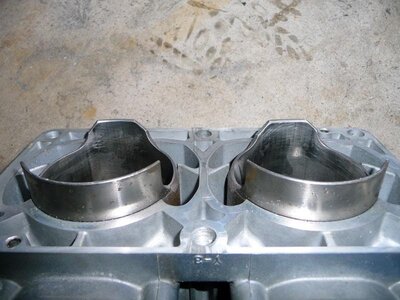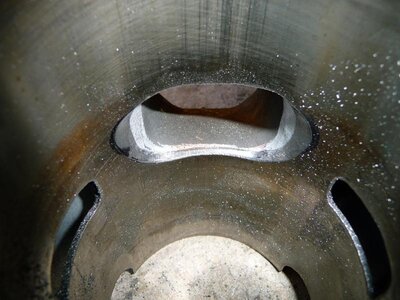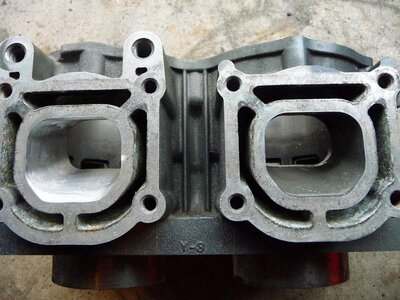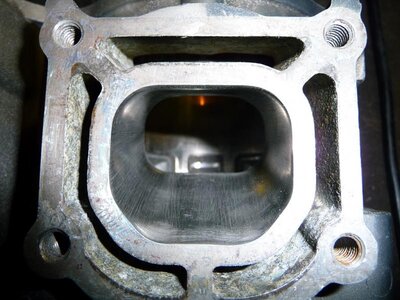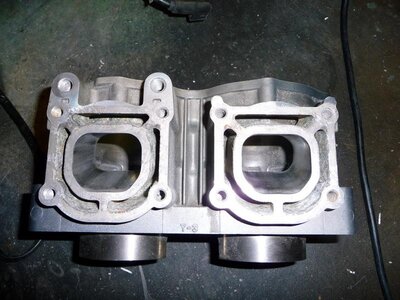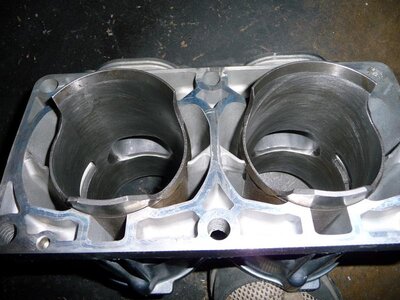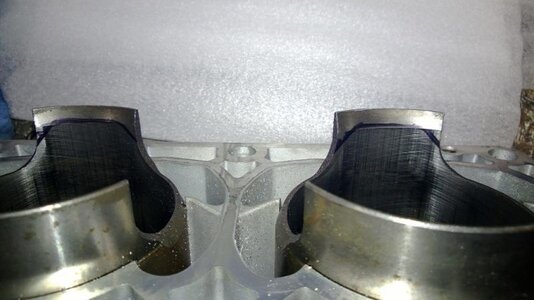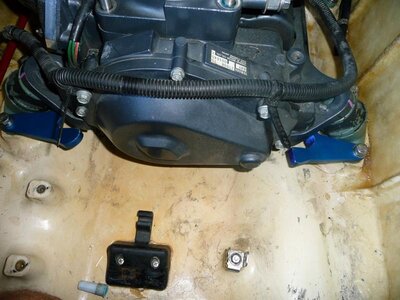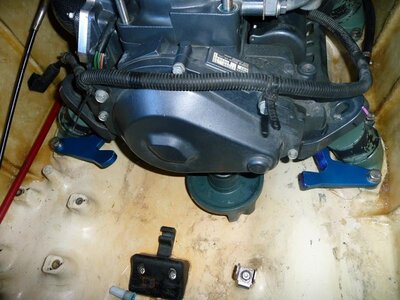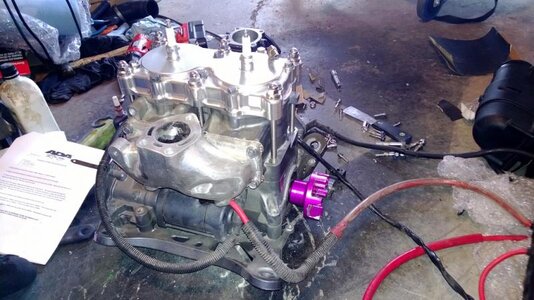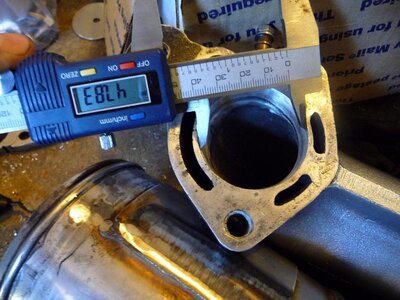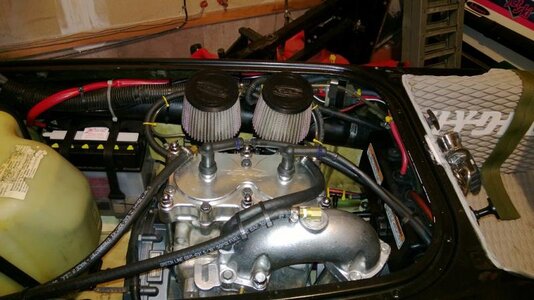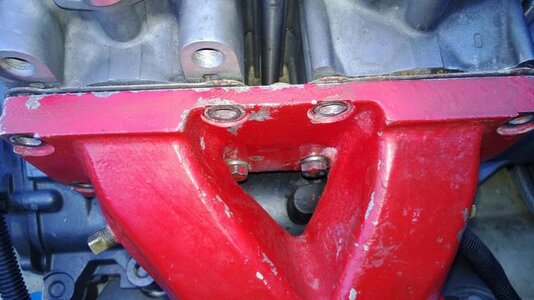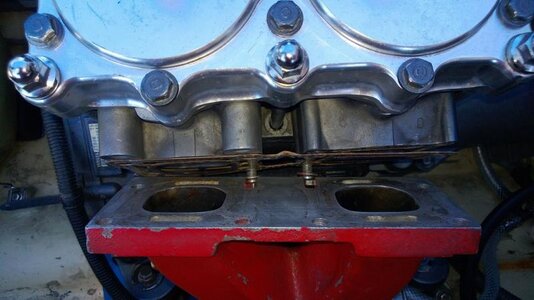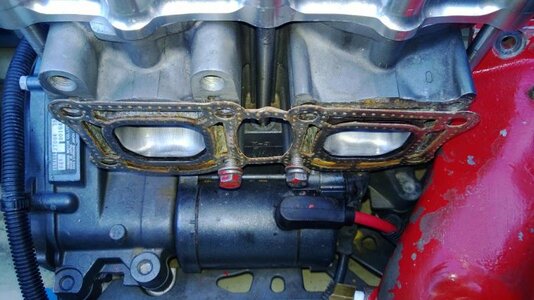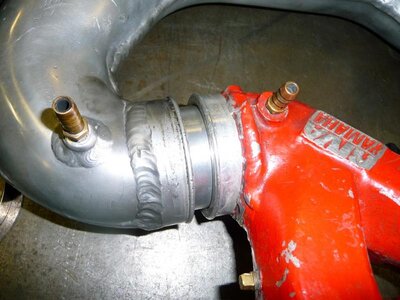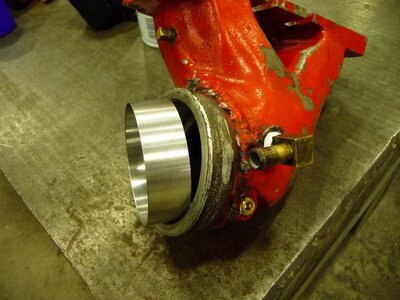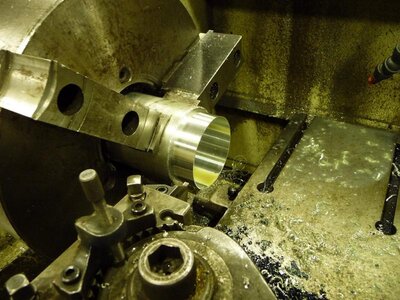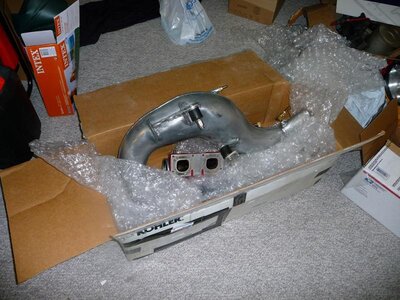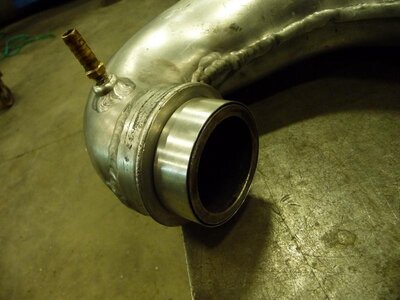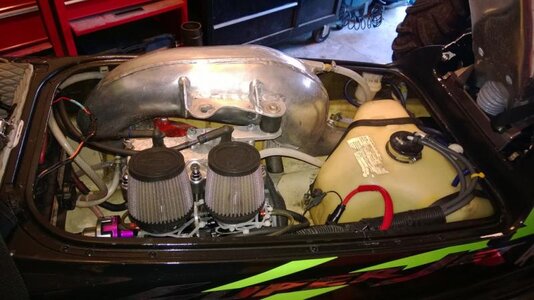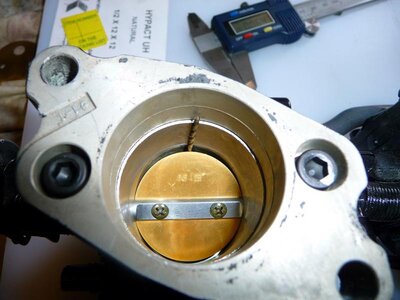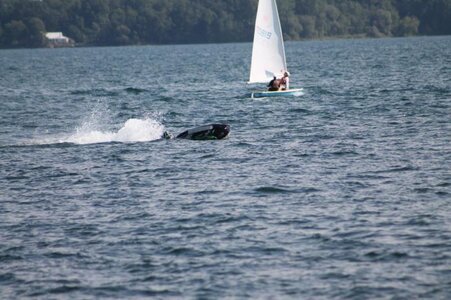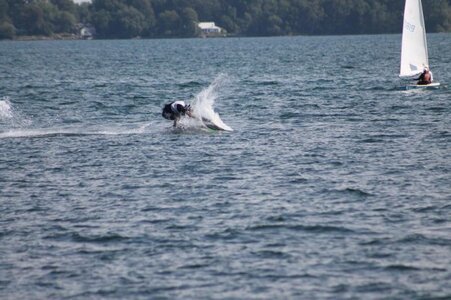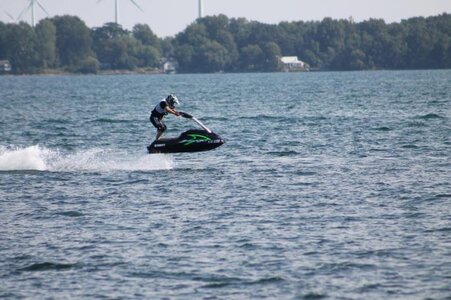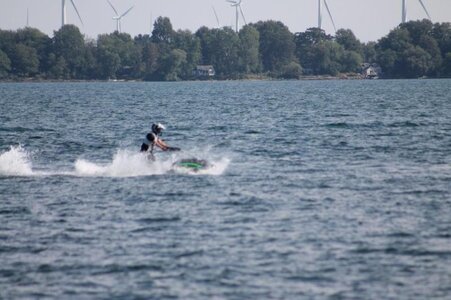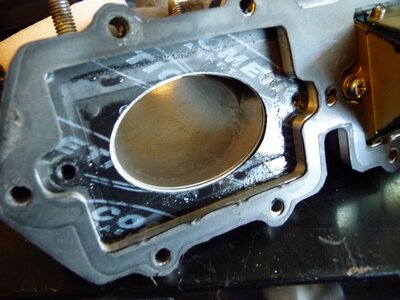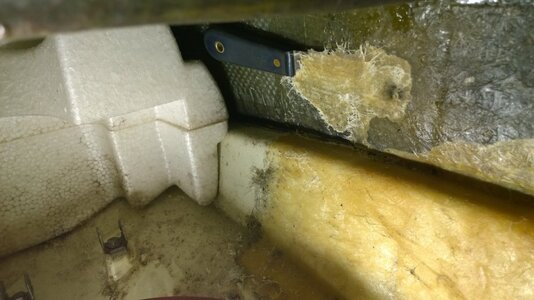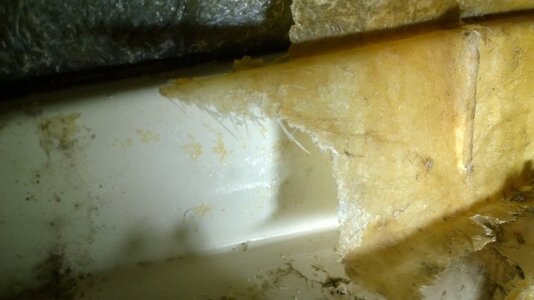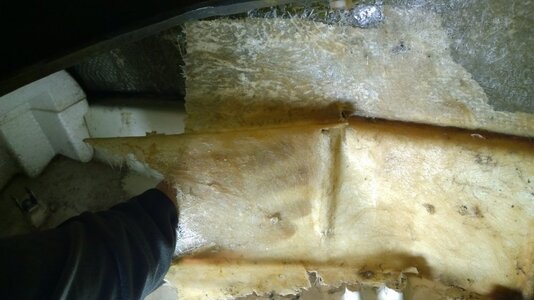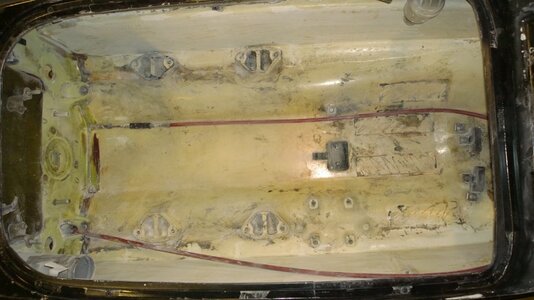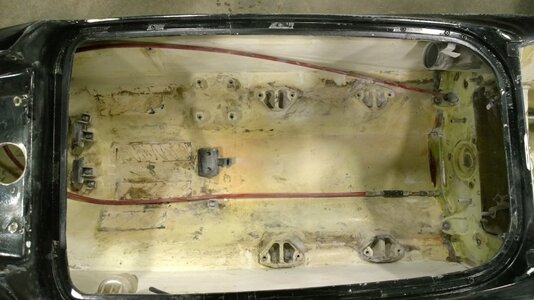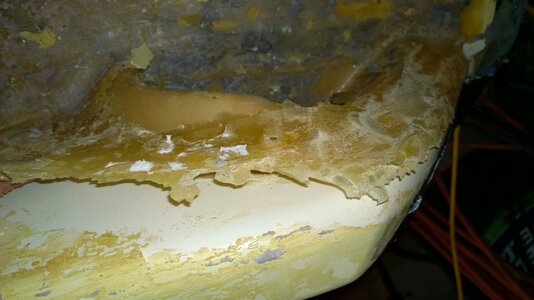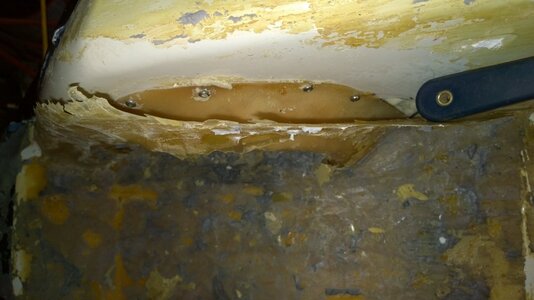Exhaust Pipes - Dry Pipes and Cheater Pipes
When the porting work was all completed, the manifold and pipe selection was next. My first thought was affordability. I sank virtually all of my available finances into the parts mentioned from the start of this Spring past up to the middle of the summer. I knew that all the engine work done, the ports, the polishing, the intake, an ADA girdled head kit...all of it would be for the most part unnoticed without a pipe to compliment it. Since the stock pipe was just that, stock and referred to by Matt_E as a "breadbox"...pfffHAHAHA...I still laugh about that awesome observation, thank you Matt =D I decided at the time that my only affordable option was one that worked extremely well on my other ski...a poor man's B-pipe. I did some hefty modifications to a Kawi 650sx pipe, mounted on a Coffman's manifold bored out to about 48mm. So I matched the head pipe and gasket to compliment the manifold dimensions. I then did all the necessary mod work needed to the headpipe and expansion chamber. In the head pipe, I had the 1/4" water injection hole welded and re-drilled to 1/8", drilled and tapped the top of the headpipe for a 1/8" NPT fitting, drilled a 1/8" hole in the stinger and had a water inlet welded on over top. Then I added an extra 4 1/2" of length to the expansion chamber for that full on bottom end punch. This can be coupled together with 4" plumbing couplers found at Home Depot and they stand up very well to the heat and vibration. The only key is to use 4 gear clamps, not the two that comes with the coupler. As for the little water drain fitting on the bottom of the 650sx pipe, I just tapped it I believe to be #6 or #8 pitch, added silicone to a screw and locked it down, this can also be welded if you choose to go that route. What I also didn't like and chose to change was the diameter of the stinger outlet size. The Yamaha exhaust hose is about 2" I.D. and the Kawi stinger is about 1 3/4". So I cut it off and had a 2" I.D. piece welded on. I know this is nothing like a genuine Factory Pipe B-pipe, but I must say, when there are no other options between this method or stock, this well out-performs the stock set-up by far. I have learned over the last few months too after working on a few Blasters, that the installation of the true B-pipe is certainly one I would like to avoid in the future. I found it very difficult to work on and install. It might be better with the SuperJet, but for the price at the time and knowing what I know now, it's not for me.
So in the first few photos, you will see the modified 650sx pipe (cheater pipe) installed. As mentioned, it worked very well but after a couple of months I decided that I needed to move up and get a real, meant for the SuperJet, pipe. So I bought a Speedwerx race version pipe. At the time I first installed it, I really was disappointed in it. I found that the only benefit was it had unreal top end, but the bottom end was less than what I had with the cheater pipe. Being very new to a full on dry pipe, I was unaware of how to route the cooling lines and set this beast up. With many hours of frustration, installation and removal I was fixing to sell it. Between Wanderer, Octane and the others that helped me go through the set-up with a fine toothed comb we dialed in the monster and I have absolutely no desire to let this one go now. The issues I was facing were cooling entering the airstream when it should not have been at all, cooling lines that it needed and I did not have, and a dual cooling pump set-up that I did not have. To make this pipe really work, you need to have dual cooling. One line supplies the exhaust manifold, one supplies the pipe waterjacket. To make this pipe really work well, you also need to re-jet your carb. I went with a 145 main, and 80 pilot. Something to keep in mind is that Mikuni carbs can only process so much fuel at a time and the total jetting capacity for the SBN's is about 220 total jetting equivalent. What this means is, you add your pilot size (80) and main (145) together to come out with a total jetting of 225. My needles and seats are stock 1.5 with stock weight springs. To compliment the new carb settings, you also need to help improve the breathing. For this I removed the choke butterflies, added in primer fittings and removed the stock airbox for R&D Pro-Lock flame arrestors.


